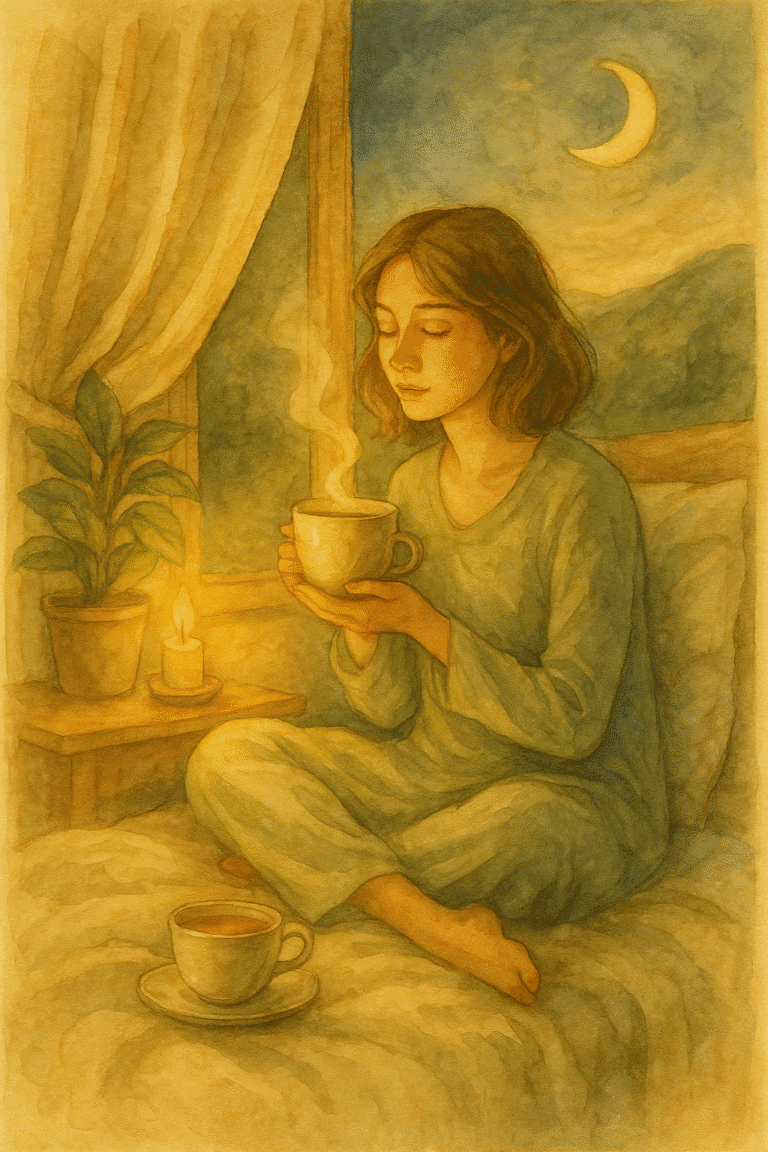Designing Your Sleep Sanctuary

Designing Your Sleep Sanctuary: Environmental Hacks for Deep Rest
A restorative night’s sleep begins long before your head hits the pillow—it starts with the environment you curate around you. From the subtle pull of moonlight to the scent of lavender, every sensory input in your bedroom can either support or sabotage your ability to drift into deep, uninterrupted sleep. In this comprehensive guide, we’ll explore ten evidence-based environmental strategies that transform your bedroom into a high-performance sanctuary for rest.
1. Absolute Darkness: Building a Melatonin-Friendly Atmosphere
Melatonin, your body’s sleep hormone, begins to rise as light fades. Even a small sliver of streetlight creeping through curtain gaps can blunt that surge, fragmenting your REM cycles. To achieve near-total darkness:
- Blackout Curtains: Choose heavyweight, triple-layered panels rated to block 99% of external light. These not only block light but also buffer noise.
- Window Film: Adhesive blackout film on windows can seal off the final 1–2% of light leakage.
- Sleep Mask: For perfect control, wear a lightweight eye mask—even if you already have blackout curtains—to ensure no light reaches your eyes.
2. Temperature Regulation: Hitting the Goldilocks Zone
Your core body temperature naturally dips by roughly 0.5–1 °C as you transition into sleep. Aligning your room temperature with this trend supports deeper, more sustained rest:
- Optimal Range: 16 °C–19 °C is ideal for most adults. Use a programmable thermostat or a compact under-bed fan to maintain this range without overheating.
- Bedding Layers: Keep multiple lightweight layers—cotton sheets, thin blankets, and a medium-weight duvet—so you can fine-tune insulation throughout the night.
- Wearable Thermostat: Consider a smart wearable that tracks your skin temperature and offers data on how often you wake to regulate heat.
3. Sound Proofing: Silencing Disruptive Noises
Waking up to traffic, creaking floors, or noisy neighbors wrecks sleep continuity. Here’s how to create a consistent acoustic environment:
- Absorptive Rugs & Tapestries: Soft textiles on walls and floors can muffle echoes and footsteps.
- Acoustic Panels: Strategically place inexpensive foam panels behind your headboard or near noise sources to absorb high-frequency sounds.
- White Noise: A dedicated white-noise machine or an app playing gentle “pink noise” can mask sudden spikes and encourage deeper sleep.
4. Natural Materials: Breathe Easy Under the Covers
Synthetics trap heat and moisture, fostering microclimates that can provoke night sweats or allergies:
- Linen or Cotton Bedding: Choose Oeko-Tex certified organic cotton or French flax linen to wick moisture and regulate temperature.
- Natural Mattress: Latex or wool-blend mattresses promote airflow and resist dust mites. For budget-friendly options, a natural wool mattress topper can suffice.
- Pillow Choices: Fillings like buckwheat hulls or natural latex maintain shape and temperature better than polyester.
5. Clutter-Free Minimalism: Reducing Visual Stress
A crowded bedroom sends low-level stress signals to your brain. Simplify your space:
- Essential-Only Furniture: Keep only the bed, one nightstand, and maybe a small dresser. Store everything else out of sight.
- Hidden Electronics: Remove TVs, laptops, and phone chargers from your sleep zone or conceal them in closed cabinets.
- Neutral Palette: Soft, muted colors (sage green, dusty blue, warm taupe) promote calm. Avoid high-contrast décor that spikes visual alertness.
6. Circadian Lighting: Mimicking Natural Rhythms
Light is your body’s most potent clock-setter:
- Smart Bulbs: Install programmable bulbs that shift from bright, cool white in the morning (to simulate sunlight) to dim, warm amber in the evening.
- Dimmable Lamps: Keep a bedside lamp on a gradual dimmer—ideally timed to start reducing light 90 minutes before bedtime.
- Sunrise Simulator: For wake-ups, a light that brightens over 30 minutes can gently transition you from sleep without jarring alarms.
7. Aromatherapy Cues: Subtle Olfactory Prompts
Scents can prime your nervous system for sleep when used judiciously:
- Lavender: Studies show lavender enhances deep sleep. Diffuse one drop in the evening, then turn the diffuser off to prevent overstimulation.
- Chamomile or Cedarwood: Both have calming effects—place a few sprigs under your pillowcase for a gentle release as you settle.
- Essential Oil Protocol: Diffuse 10 minutes before bedtime, then ventilate the room to avoid overwhelming the nose.
8. Bedside Toolkit: Convenience to Preserve Continuity
Late-night awakenings are less disruptive when you don’t have to leave your sanctuary:
- Nightstand Essentials: Keep a glass of water, earplugs, a silk eye mask, and a small dimmable light within arm’s reach.
- Minimal Disruption: Avoid overhead lights or harsh switches—opt for soft-touch lamps or LED strips with a low lux output.
- Emergency Supplies: If you’re prone to dry nose or throat, a small saline spray can keep you comfortable without a trip to the bathroom.
9. Air Quality & Freshness: Oxygenate and Reset
Stale air filled with CO₂ can reduce sleep depth:
- Pre-Sleep Ventilation: Crack a window for 5–10 minutes, even in cooler months, to exchange air.
- HEPA Filter Purifier: In urban or high-pollen areas, a purifier removes allergens and fine particulates that can disturb breathing.
- Houseplants: Certain plants (snake plant, peace lily) can modestly improve indoor air, but avoid overwatering to prevent mold.
10. Digital Detox: Blue Light & Mental Unwind
Modern screens emit blue wavelengths that delay melatonin onset:
- Screen Curfew: Power down all devices at least 60 minutes before lights-out.
- Warm-Mode Software: Apps like f.lux or “Night Shift” on devices can reduce blue light, but nothing beats a real break.
- Analog Alternatives: Replace bedtime scrolling with paper journaling, light stretching, or reading a physical book under soft, warm light.
Bringing It All Together: A Phased Implementation
Overhauling your sleep environment need not be overwhelming. Follow a phased approach over 4–6 weeks:
- Week 1–2: Install blackout curtains, purchase a sleep mask, and set your thermostat to 18 °C.
- Week 3–4: Add sound-dampening rugs or a white-noise machine; swap to natural-fiber bedding.
- Week 5–6: Integrate aromatherapy, programmable lighting, and remove electronics from the space.
Track your progress with a simple sleep log: note the time you fall asleep, number of nighttime awakenings, and subjective restfulness across mornings. Within a month of consistent environmental tweaks, most people report deeper sleep, fewer mid-night awakenings, and more energized mornings. Your bedroom is your greatest ally in the pursuit of restorative rest—treat it with the same care and precision you might give to a high-performance workstation or a meditation altar, and it will reward you with nights of uninterrupted renewal.



